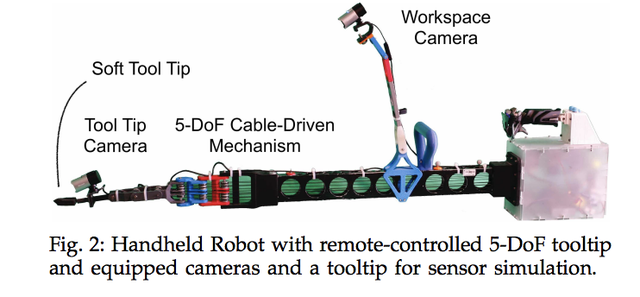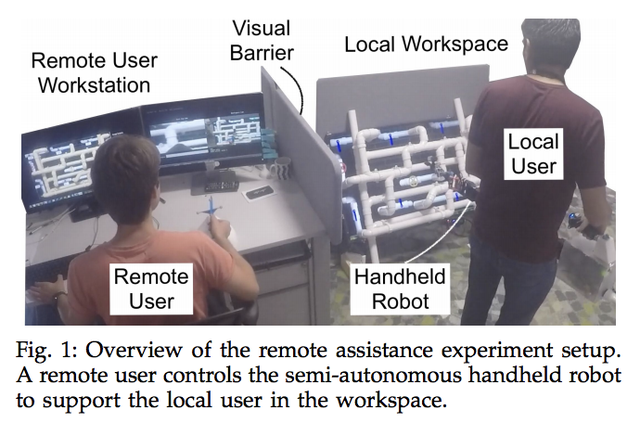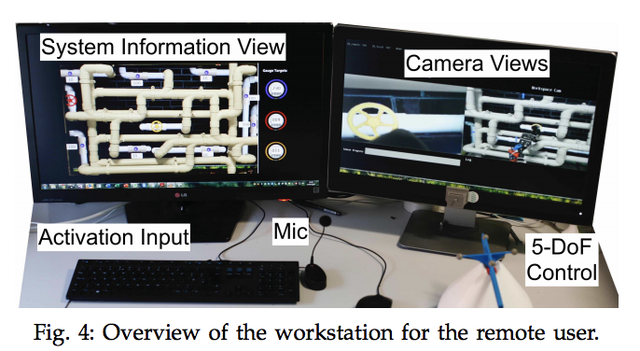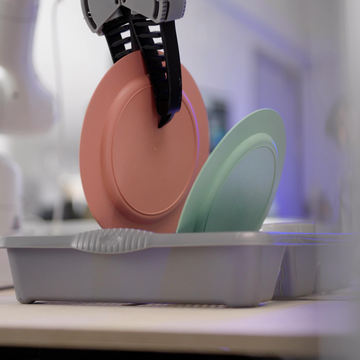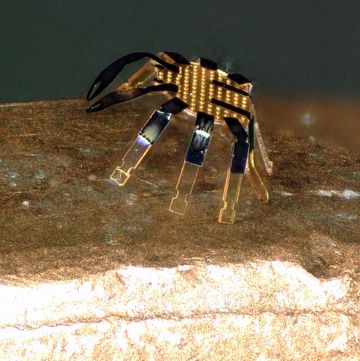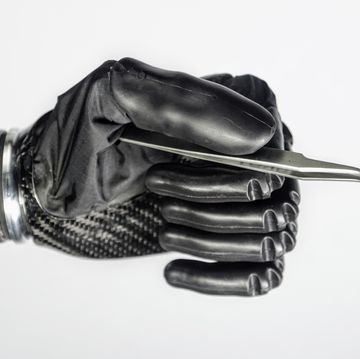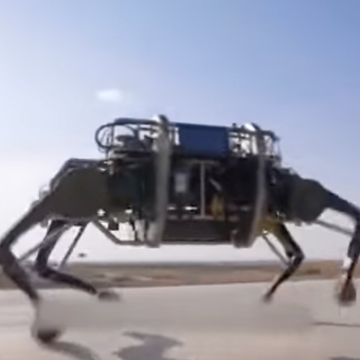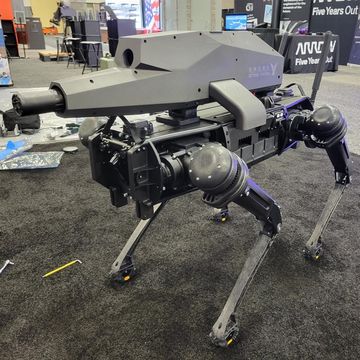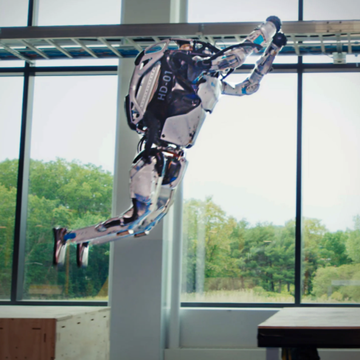- Two researchers from the University of Bristol in the U.K. have developed a process wherein a robotic arm can remotely aid in repair-based tasks.
- In a new paper from last month, the researchers report that the partially autonomous robot improves task efficiency by 24 percent.
- This technology can also assist surgeons teaching novice doctors-in-training how to perform invasive surgeries.
Two researchers at the University of Bristol have gotten society a step closer a robo-reality, though the experiment is still in its early stages. It's a handheld robotic arm that just may be the answer to some pretty tough maintenance, guidance, and diagnosis-based tasks that involve remote instruction.
To understand how this robot works, it's vital to understand the problem that Janis Stolzenwald and Walterio W. Mayol-Cuevas, the authors of the study, were looking to solve. In situations where collaborative remote assistance is used, the local worker (the one learning or the one who is less experienced) must fully understand directives from another remote worker who has the expertise. To train young doctors in invasive surgery, for instance, a more experienced physician may train the novice remotely, while describing how to manipulate a tool.
Remote assistance will be particularly useful in industrial applications, like in modern, complex plants, the authors say. It takes a high level of expertise to diagnose or solve an issue or it may be expensive to get an expert on-the-ground to fix a problem, like a machine in the manufacturing process going offline or a blockage in a pipeline. While augmented reality systems and telemanipulation processes are already in use, these methods are lacking, the researchers said. That's mainly because problem-solving is difficult between the remote and local workers, despite the robustness of current methods of communication.
To bridge that gap, Stolzenwald and Mayol-Cuevas proposed a system that uses a semi-autonomous handheld robotic arm and tested it in a partially simulated pipe maintenance task.
Here's how it worked: On the worksite, a handheld robot, equipped with a camera and five degrees of freedom (meaning the arm can move in five different planes), is controlled by a local user. Then, a remote user accesses the robotic arm that the other worker is using through a custom interface. It lets them control and manipulate the robot while the other person at the worksite holds the arm.
Stolzenwald and Mayol-Cuevas were mostly interested in observing how the three main parties in the study—the remote worker, the local worker and the robotic arm—collaborated.
"In terms of task performance, we found that the handheld robot’s autonomy and task knowledge contributes to a more efficient collaboration as it reduces the time to complete the task," Stolzenwald and Mayol-Cuevas wrote.
They found that the robotic arm, controlled remotely but held by a local user, increased the efficiency of the tasks tested by 24 percent—a significant increase if you're a business owner and your company has huge scale.
In terms of communication, which was the main goal, the scientists found that— qualitatively, at least—the ability to remotely control the tip of the robot's arms make it easier to complete a task. They believe its due to the arm's deictic gestures, which resemble the earliest movements that babies make, including extending their fingers.
In effect, less verbal communication was required between workers to complete the pipe maintenance. The researchers deduced that this is because the robot's aiming feature replaces a remote user's instructions for low-scale motion and also reduces the task knowledge required to move. In short, having imperfect information about tiny movements that must be made—as in invasive surgery—is less problematic with the robotic arm in use.
Think it sounds fun to work with a robotic arm?
Well, Stolzenwald and Mayol-Cueva have looked at that, too. In a second paper published last month, the duo investigated how people respond to a robotic arm that can complete a task but, in practice, will do its own thing. Not surprisingly, users get extremely flustered when their plans don't align with those of the robotic arm.
In order to create harmonious human-computer interaction—like a person using the robotic arm just like a power tool—it's helpful to study not only positive interactions, but also instances wherein the robot arm deviates from what the user wants it to do.
In the future, Stolzenwald and Mayol-Cueva want to move beyond the simulations they tested the robotic arm in and transition into real-world settings. They'd also like to study how fully trained remote workers can benefit from this robotic assistance and how local users are benefitted in training scenarios.

